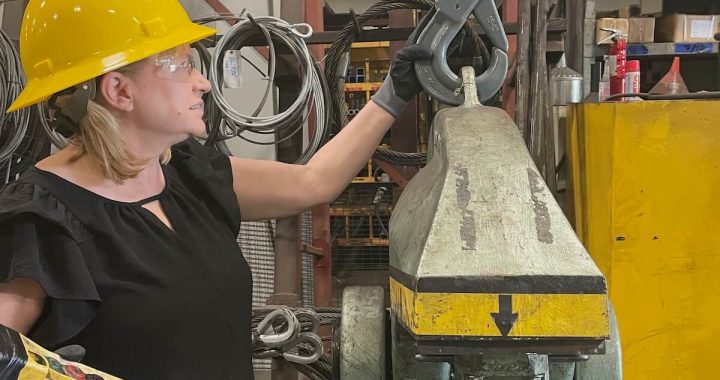Using The Right Hooks Is Vital
AMH issues warning over swivel hook confusion
Confusion over swivel hooks is creating safety risks and increasing costs for lifting companies, according to industry veterans.
All Material Handling (AMH) says that the industry using the same name for two types of hooks can lead to the wrong hook being used in a range of applications. There are two types of swivel hooks and mixing them up can have serious consequences.
“There are key differences between a standard swivel hook with a bronze bushing and a ball bearing-style swivel hook, but not everyone understands those differences,” said Lukasz Biela, regional sales manager at AMH.
According to AMH, a bronze bushing hook should really be called a positioning hook because it can swivel into position when attached to the pick point. While this is useful, this type of hook can’t swivel while lifting a load. It will successfully move the load a few times but will also slowly shear the shank – that will ultimately lead to a sling twist or a full failure.
“Make sure you know if the hook is designed to swivel under load, or if it’s only intended to swivel for positioning,” said Lukasz.
For safely manipulating the load, a swivel hook with ball bearings is the right choice. The hook’s ball bearing system enables it to spin freely, even when under load. An example would be lifting a generator to position it below in a parking garage, in an inset space. You can swivel the hook until it is flush with your pick point to safely lower the load, but the inset space for the generator is often not on the same alignment as the load. You need to adjust the load, so it fits flush into the space and that’s where a ball bearing hook is necessary.
Experienced riggers know that some crane blocks have an integrated ball bearing, meaning the rigging hook doesn’t need them. Similarly, pick points such as rotating eyebolts or swivel hoist rings with ball bearings will negate the need for a swivel hook.
“If you are on a jobsite with a rented crane that has basic functionality and the load has pre-inserted pick points that do not swivel, you will find yourself in a tough spot without some way to manipulate that load,” added Lukasz. “Overall, to safely manipulate a load while it is under tension, at some point in the chain of rigging you will need a ball bearing-enabled fitting.
“From a safety perspective, the ball bearing gives you an extended life because you are not shearing the shank of the hook when lifting.”
AMH is a leading provider of lifting and material handling equipment. It offers a range of ball bearing swivel hooks in its Grey Classic series, plus pick point products such as rotating eyebolts and swivel hoist rings with bearings.
AMH serves the North American lifting industry through a network of distributors and channel partners, ensuring wide availability of products and short lead times.
For further information on shortening hook assemblies, contact AMH on www.AllMaterialHandling.com

